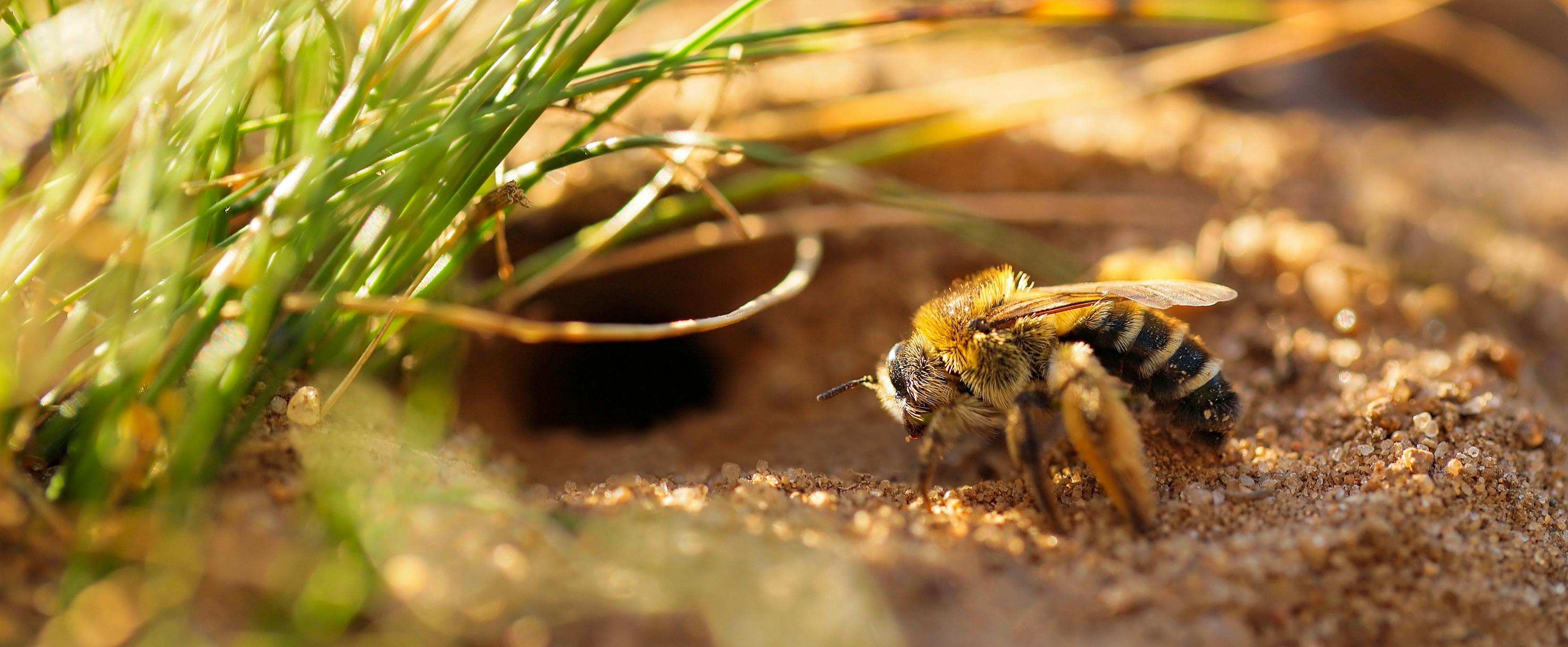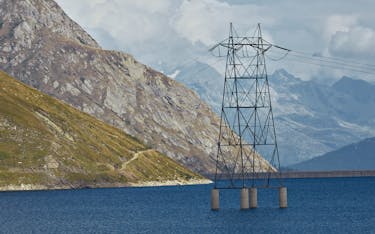
The construction and maintenance of lines and substations can have a significant impact on biodiversity. This impact is taken into account during the extensive federal approval process for grid projects, and appropriate measures to protect biodiversity are defined. The overarching goal of the Federal Act on the Protection of Nature and Cultural Heritage is to achieve «zero balance». This means that the ecological value after the intervention should be the same as before. Swissgrid consistently complies with the strict legal requirements for the conservation of biodiversity and applies the principle of «avoidance – protection – restoration – replacement».
The environmental risk analysis prepared by Swissgrid under its HSE management system identifies various potentially negative impacts, for example on forests, on flora and fauna at pylon sites, along line routes or above underground cables due to vegetation management. Keeping vegetation down can disturb the habitat of plants and animals, as can carrying out clearing work near lines that is necessary for their safe operation. Forest aisles can also favour the spread of invasive neophytes. The grid infrastructure also has an impact on fauna, particularly birds, mainly due to the risk of collision with lines.
Inventory of grid infrastructure in protected areas of national importance
Ecologically protected areas of national or cantonal importance are also taken into account in the sectoral plan for transmission lines when considering planning areas and analysing corridor variants. It is not always possible to avoid a protected area when planning and installing a line. In these cases, Swissgrid examines and implements protection, restoration and alternative measures. A total of 3,729 pylons (31%) and 73 substations (58%) belonging to Swissgrid are located in at least one protected area of national importance.
The vegetation management carried out by the foresters creates ecological added value, for example by encouraging greater biodiversity.
Measures for the conservation of biodiversity
Swissgrid consistently implements the measures for the protection and conservation of biodiversity defined in the approval process for each grid project, and strictly complies with the relevant legal requirements.
Route management on existing lines currently includes keeping down the trees under the lines, as regulated in the easements with the landowners, recorded in servitude agreements or ordered during the planning approval procedure. This is not necessary under all lines, as many lines span forest areas. However, where this is not the case, the vegetation height must be kept low in wooded areas under lines. Six foresters at Swissgrid plan this work along the lines and have it carried out by specialist companies in the relevant region. This ensures that the lines can be operated safely at all times. However, the vegetation management carried out by the foresters is not only important for security of supply and line maintenance, but also creates ecological added value, for example by encouraging greater biodiversity.
Swissgrid works with external partner organisations to protect, maintain and enhance the ecological infrastructure in Switzerland, above and beyond regulatory and official measures. Small structures under pylons are an example of this cooperation work. Piles of branches and stones or small ponds are used to create habitats for amphibians, reptiles, insects or other anthropods and small mammals. Swissgrid assists the nature conservation organisations that supervise these projects by assessing sites in association with external partners, providing the necessary geodata, and specifying the conditions that must be met to ensure the safety of the lines.
To date, a total of 107 small structures have been built under electricity pylons thanks to partnerships of this kind. Nesting aids have been installed on 15 pylons. Various small structures can be found between Uznach and Weesen, for example, where the Lebensraum Linthebene foundation has helped to create ponds and piles of branches below Swissgrid’s overhead lines. Overall, the number of enquiries from nature conservation organisations has steadily increased in recent years.
Environmental protection measures that also focus on preserving biodiversity are defined during the approval process. The means of monitoring the effectiveness of measures is set out in the «Environmental protection measures for grid construction projects» section. Swissgrid strictly complies with the legal requirements in order to maintain, and in some cases even increase, the natural value of biodiversity in accordance with the overarching net-zero target. However, the effectiveness of measures is not analysed in detail by measuring species diversity or other biodiversity aspects.




